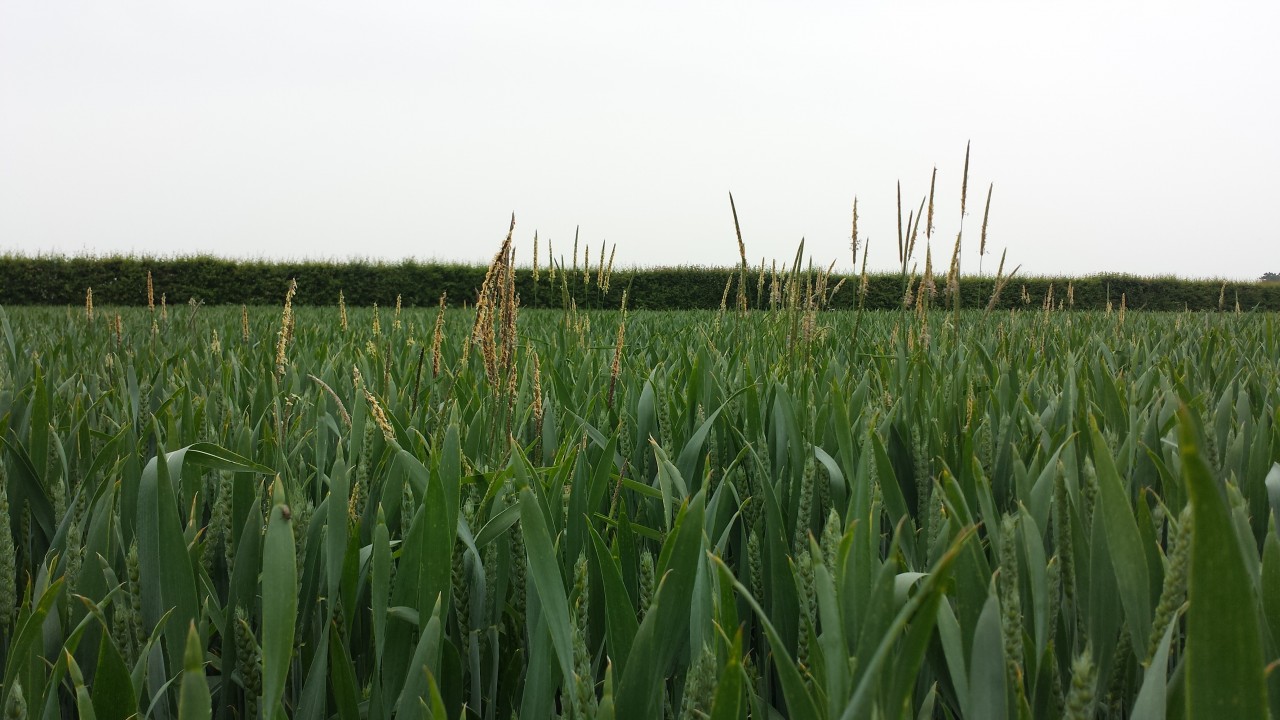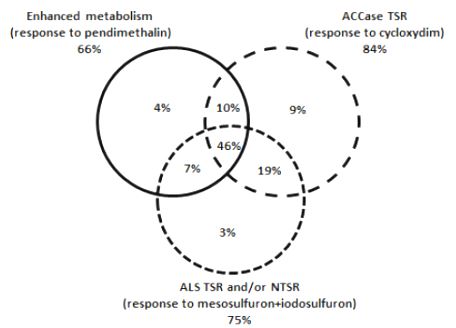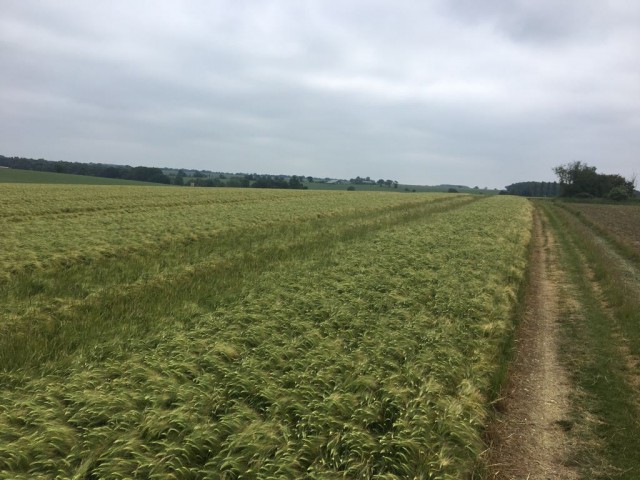Grassweed series: Black-grass management pre-harvest
Black-grass is major problem on many UK farms and it is now widely accepted that fully integrated solutions to manage the weed are fundamental to achieving any kind of success. Ultimately, most approaches are aimed at limiting seed return in order to reduce the overall population pressure.
In this blog, I discuss a number of management options that should be considered pre-harvest to reduce seed return and which should form part of an overall, long term plan to eradicate the weed.
What is black-grass?
Black-grass is an annual grass weed propagated solely from seed. This means that for long-term control, it's essential to minimise the number of seeds that each black-grass population drops.
Black-grass seed potential
The number of heads per black-grass plant varies considerably, depending on crop competition. Typically, each black-grass plant has 2–20 heads when growing among a competitive winter cereal crop. Each head can contain in the region of 100 seeds, and, with populations of 500 heads per squared metre not uncommon, seed return can easily exceed 50,000/m2 (Moss 2010). The speed of seed maturation is influenced by the weather but can be rapid, with most seeds shed prior to harvest, typically between July and August. The sheer volume of seeds black-grass can generate makes pre-emptive action vital to maintaining control.
The herbicide resistance of black-grass
In the UK, herbicide-resistant black-grass was first found in 1982 (Heap 2014), and it is estimated that resistant black-grass occurs on at least 80% of the 20,000 farms that spray regularly for control of the weed (Moss et al 2011).
In the UK, black-grass populations show resistance to a wide range of different modes of action. That is to say, black-grass can resist a range of herbicides which target different plant processes to destroy the plant. This resistance can occur both in the form of target site resistance (TSR) and non-target site resistance (NTSR). In other words, black-grass populations can both prevent the herbicide from binding to the plant in the first place and/or survive successful herbicide applications through enhanced metabolism, which degrades the herbicide before it can take effect. In regards to the black-grass populations, this has shown to be true for both ACCase and ALS inhibitors.
Combined target site resistance, in which both ACCase and ALS TSR mutations occur within the same plant, has been demonstrated and must be expected to increase (Marshall et al., 2013). In other words, populations of black-grass plants which have increasing resistance to both types of herbicide are becoming more widespread.
This has been demonstrated through biological studies. For example, in 2013, 122 non-random samples of black-grass were collected and tested using standard pot assay and petri-dish methods to assign a herbicide resistance rating against three types of herbicide.
The possible ratings were:
- S - Susceptible
- R - Marginally resistant
- RR - Resistant
- RRR – Highly resistant.
Of the 122 populations tested:
- 98% showed resistance (RR or RRR) to at least one herbicide
- 75% were resistant to mesosulfuron + iodosulfuron
- 84% were resistant to cycloxydim
- 66% were resistant to pendimethalin
- 46% were resistant to all three herbicides.
Sampling black-grass seed for resistance testing
Understanding the resistance status of black-grass populations on the land you farm will help when it comes to planning the most appropriate herbicide strategy. You'll need to accept that a long-term, fully integrated approach will be necessary.
Seed sampling of black-grass populations should form part of this strategy. When sampling seed for resistance testing, make sure the seed is ripe. Black-grass seeds are ready for sampling when seeds are brown and fall off the panicle on their own when gently brushed with your hand; you won't need to force seed off the plant. In general, the best time to sample is the second to third week of July, when 10-20% of seed has shed.
The following outlines the best practice for sampling black-grass seed:
- Walk a 'W' shape across the black-grass patch or field to collect seed. Don't just take seed from one area of patch or field only
- Tap the seed head into a dry plastic container
- Don't strip the heads, as the test doesn't work with unripe seed
- If the seed is damp, air-dry in an open container
- When you send the seed sample, make sure this is in a paper envelope
- Fill in any form details as comprehensively as possible
- Order your resistance test.
It is also advisable to map the worst affected areas to enable future management decisions to be more targeted. For example, SOYL's iSOYLscout app is a great tool that allows you note areas of interest or concern while out in the field, with the information then synced to its web-based precision management application, MySOYL. These areas can then be monitored over time, with any treatments or actions built into wider farm management plans.
Pre-harvest management of black-grass
With regards to pre-harvest management and depending on black-grass pressure and distribution, there are a number of possible pre-harvest treatment options.
- Either patch spray the worst affected areas with glyphosate, or, if the pressure is too high, consider spraying the entire field.
- Remove the whole crop with the crop chopped directly into a trailer rather than being dropped on the ground and picked up again, as dropping on the ground may shake the black-grass seed out. Furthermore, consider treating populations with glyphosate before cutting to try and ensure that any seed that does get dropped is less viable. Check harvest intervals on product labels.
- Hand rogueing is feasible and economic where populations are low and where black-grass is only just starting to appear.
- Consider harvest weed control options, such as chaff tramlining - an approach pioneered in Australia as part of an Integrated Pest Management (IPM) approach to manage resistance ryegrass. Trials in the UK have demonstrated that this can also be effective with black-grass seed when monitored across a 2–3 year rotation.
Seeking further information and advice
If you'd like to talk more about any of the topics covered in this blog, please speak to your Frontier contact or get in touch with us at This email address is being protected from spambots. You need JavaScript enabled to view it. or on 01522 860000.
As a subscriber, you’ll receive email alerts each time a new blog is published so you can always stay updated with the latest advice and insights from our experts








Comments